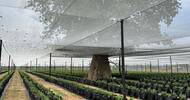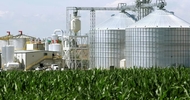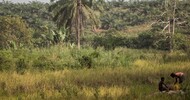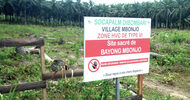
Philippines Agriculture Secretary Emmanuel F. Piñol and PNG Minister of Agriculture and Livestock Benny Allan
On Piñol’s idea to rise with rice in Papua New Guinea
By Michael Makabenta Alunan
Agriculture Secretary Emmanuel F. Piñol’s proposal to “export” Filipino private sector-led rice-farming systems to Papua New Guinea may have raised condescending eyebrows from economists and agriculture experts, but his novel strategy can perhaps open up vast potentials and unintended opportunities.
Thinking out of box? Piñol, a boxing aficionado early on in his career, even as a former journalist, long before he joined politics, was thinking out of the box when he proposed to bring high-end Filipino rice-farming systems to Papua New Guinea.
Only over a week ago, Piñol went to Papua New Guinea, a British Commonwealth Realm, and got its Prime Minister Peter O’Neill to commit to come over to meet with President Duterte sometime in May and possibly cement bilateral economic commitments, followed by a treaty that can institutionalize any mutually beneficial arrangements.
However, top-notch economists and agricultural planners led no less by former Socioeconomic Secretary Dr. Cielito Habito and former Agriculture Secretary William Dar have criticized Piñol, asking two valid questions: 1) Why focus on “rice self-sufficiency” when we cannot compete against Thailand’s and Vietnam’s production costs of rice at P5 to P6 per kilo against P10 to P12 per kilo in the Philippines? Many economists would therefore advise to give up the elusive goal of self-sufficiency, and settle instead for food security while focusing on higher incomes from other high-value cash crops and livelihood activities; and 2) Why go to Papua New Guinea when we have more problems locally?
Can’t do away with rice yet. Speaking on March 22 before the 2017 Philippine Agricultural Journalists Inc. and San Miguel Corp.’s BINHI Agricultural Journalism Awards, Piñol argued we cannot simply abandon rice self-sufficiency, unless Filipinos change their diets and reduce their rice consumption.
For the poor, who survive on a hand-to-mouth existence, 80 percent to 90 percent of their income is spent on food, the bulk on rice to fill their hungry stomachs and less on real food. A study by Professor Jeyakumar, a rice dietary expert and one-time fellow of the International Rice Research Institute, noted that obesity of Westerners like the Americans is caused by almost 40 percent in high-fat diets, compared to Asians, whose average diets are composed of 67 percent carbohydrates, mostly rice, and only 21 percent fats. For the dirt poor, rice may even share as much as 90 percent of their diet.
As our traditional sources of rice imports, Vietnam and Thailand are also vulnerable to climate change with Thailand devastated by a tsunami years back, Piñol claims we must continue aiming for rice self-sufficiency and developing alternative sources like Papua New Guinea.
It’s no “Guinea pig,” it’s real! Piñol argues the rice-farming potentials in Papua New Guinea are real and tremendous based on actual pilot results. This makes Piñol’s idea no longer a “guinea-pig experiment,” referring to how scientists use rodents or laboratory rats, popularly called “guinea pigs.”
Actual rice-farming experiments done in Papua New Guinea yielded 8.5 metric tons per hectare, even without fertilizers, even double our national average yield of 4MT per hectare, he revealed in conversations while seated at the BINHI awards.
The reasons for this are 1) Papua New Guinea is blessed with good rainfall with its remaining lush forests and watersheds as evidenced by its vast rivers as wide as a kilometer, and easily diverted to feed irrigation canals; and 2) Papua New Guinea’s farm soils are vastly virgin and rich, unlike Philippine rice lands that are already toxic from four to five decades of chemical fertilizer and pesticide usage.
All the land to offer. Papua New Guinea’s Prime Minister Peter O’Neil instantly offered 100,000 hectares for planting even starting tomorrow, but can develop easily 2 million hectares in government lands for rice farming with irrigation.
“PNG has only 8 million people and over 46.28 million hectares of land, mostly forest and agricultural lands, compared to our 105 million and 30 million hectares, respectively,” Piñol said.
Rice farming will mutually benefit both countries. Rice farming will be done exclusively by the private sector, but can tap Filipino workers. Any excess produce can be exported cheap to the Philippines, and any excess exported worldwide. For Papua New Guinea, producing its own rice is novel, as it had long been sourcing rice from former surrogate colonizer, Australia, which allegedly imports cheap rice from Vietnam, then sells it to Papua New Guinea by as much as P100 per kilo.
Pursuing the Papua New Guinea option is logical for Piñol, as we have limited rice lands of 4.8 million hectares. In fact, only 3.9 million hectares are planted to rice, of which only 1.2 million hectares have irrigation, the remaining 2.7 million hectares are rain-fed areas producing only once a year at low yields.
New sites, new sights? As an island archipelago, we have fewer flat lands suitable to rice producing thrice a year, but more sloping mountain areas with mixed eco-systems, including adjacent marine and mangrove areas. Piñol added traditional rice sites like Luzon and Bicol are ravaged yearly by 21 typhoons a year.
We won’t abandon these areas, but we need to develop new sites like Palawan, Samar, Agusan, Zamboanga, Davao, Basilan and Soccsksargen and, of course, in Papua New Guinea.
Piñol declared earlier that even former warzones in Mindanao and portions of military reservations like Fort Magsaysay’s 46,000 hectares, can be converted to production areas. This will realize the biblical phrase of “converting swords to ploughshares,” which we can call transforming arms into farms.
While Piñol is confident of hitting 100-percent rice self-sufficiency by 2020, he says the growing population will overtake our capacity to produce. Thus, the need to develop new sites, and the urgency to keep our sights on new ideas, new technologies and even achieve unintended opportunities, which, ironically, are the very intended targets of our economists and experts. As we gain from new sites, old sites may slowly shift to non-rice, but more profitable commodities and other agro-processing ventures.













